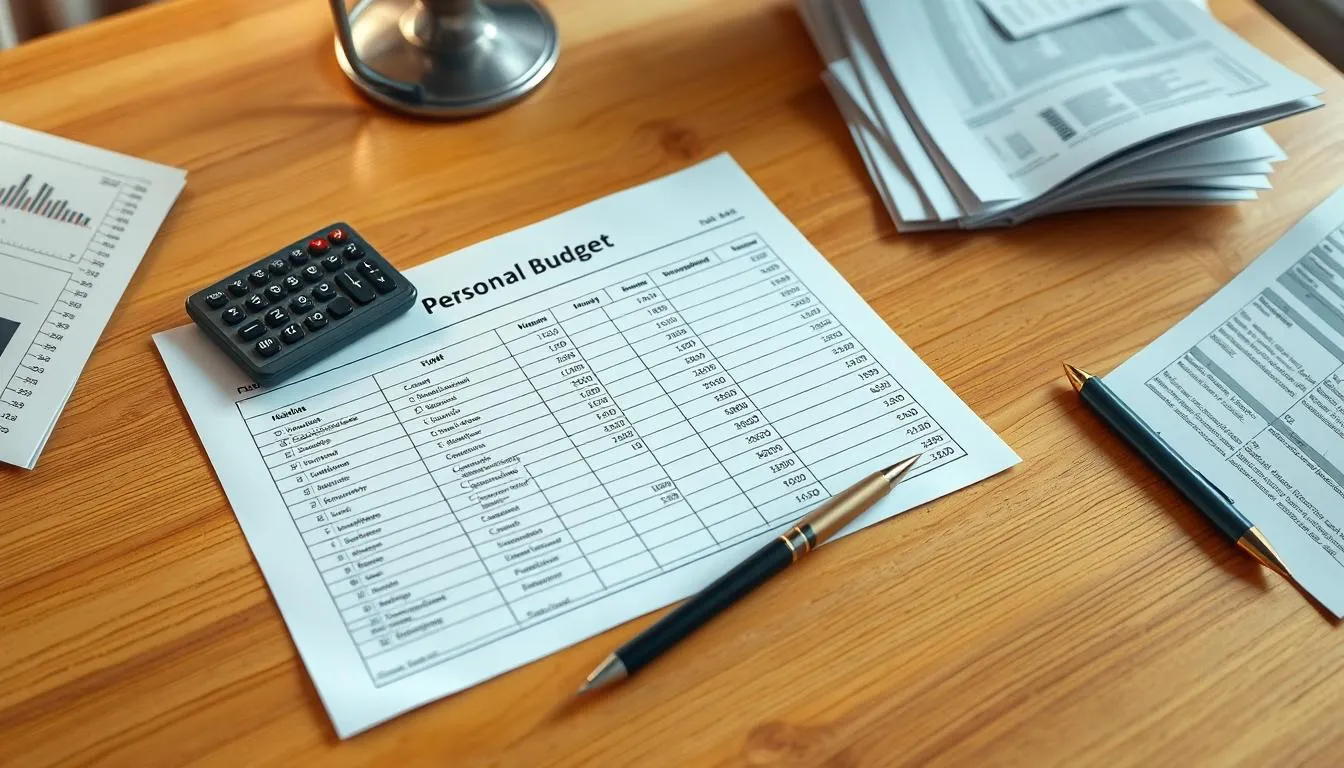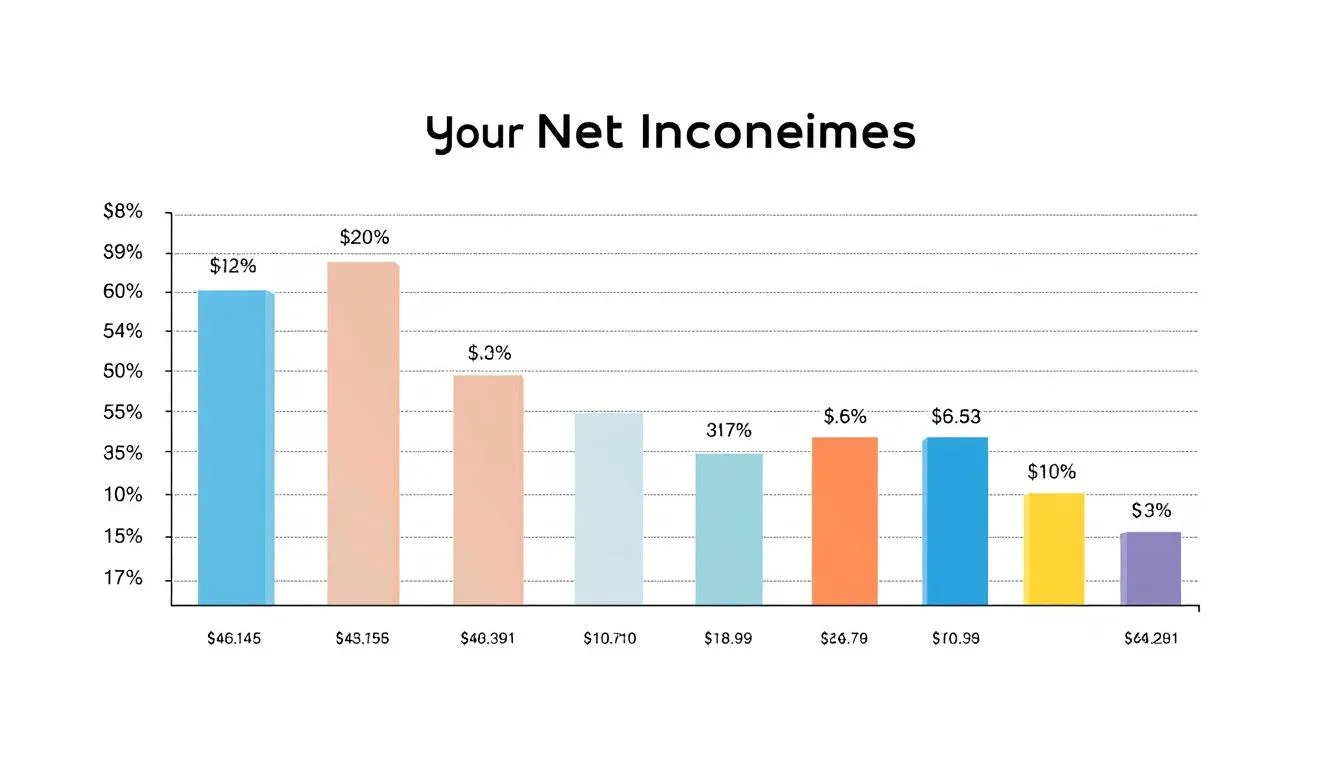Surprising fact: nearly 70% of people say they feel more stress before payday than at any other time of the month.
This guide shows how a simple plan can change that. Start by listing income and core expenses before the month begins. That small step helps you see where dollars go and gives you control to save for goals.
Use a tool you will actually use—an app, a spreadsheet, or pen and paper. Include savings and debt reduction as line items and automate transfers when possible. Expect a learning curve; most people get comfortable in about three months.
By the end of this article, you will get a practical, step-by-step path to get started, track spending and expenses, and build monthly routines that protect your needs and free up money for what matters.
Key Takeaways
- List income and core expenses before the pay period arrives.
- Pick a system you will actually use: app, spreadsheet, or paper.
- Include savings and debt as regular line items and automate transfers.
- Track spending weekly to prevent surprises and curb overspending.
- Expect a few months of adjustment; simple habits build lasting results.
What a Personal Budget Is and Why It Works Today
A clear written plan makes the month’s dollars work for you instead of slipping away.
Definition: A budget is a written monthly spending plan that lines up income and expenses so bills get paid and savings grow.
Why “written” matters: putting categories and amounts in a lasting form turns vague intentions into actions. An itemized list shows where money goes and makes trade-offs visible.

How to keep it written
- Use an app like EveryDollar or Mint for automatic tracking.
- Try a Google Sheet if you like calculations and charts.
- Or use a notebook if pen-and-paper helps you stick with it.
“Writing down your income and expenses is the first step to seeing what you can save.”
Your plan should list core items: savings, giving, utilities (water, electricity, heat, telephone) and living categories such as food, transportation, subscriptions, and miscellaneous.
| Category | Example Items | Purpose |
|---|---|---|
| Housing & Utilities | Rent/mortgage, water, electricity, heat, phone | Keep essentials paid on time |
| Living Expenses | Food, transport, clothes, subscriptions, gym | Daily needs and lifestyle |
| Savings & Debt | Emergency fund, debt payments | Build security and reduce interest |
Set Goals First: Tie Your Money Plan to Real-Life Priorities
Define your top priorities first so each dollar you earn moves you closer to them.
Start here: list short-term targets like a car repair fund and long-term aims like a house down payment or retirement.

Short-term vs. long-term goals
Short-term goals cover months to a few years. Examples include a car fund, travel, or an emergency cushion.
Long-term goals such as a house or retirement need steady contributions and a longer timeline.
Align categories with goals
Turn each goal into a clear category and assign a monthly amount. Automate transfers so contributions happen without thinking.
Rank categories by priority so essentials and high-impact goals get funded first. This makes progress visible and motivating.
| Goal Type | Example | Monthly Amount | Why it matters |
|---|---|---|---|
| Short-term | Car repair fund | $50–$400 | Prevents debt after unexpected costs |
| Medium | Travel or education | $100–$300 | Keeps dreams on schedule |
| Long-term | House down payment / retirement | $200+ | Builds lasting security |
For tactics and steps on goal setting, see setting financial goals.
Calculate Net Income Before the Month Starts
Estimate what will hit your bank this month to create a reliable spending plan.
Why it matters: knowing your net income gives the clearest starting point for any budget. Use take-home amounts, not gross pay, so your plan matches what actually arrives.

How to estimate variable pay and irregular income
If pay varies, average recent deposits by pay period or multiply expected hours by your hourly rate to calculate net figures. Be conservative to build a buffer.
Include all income sources: wages, gifts, refunds
List every source of money: wages, side work, gifts, refunds, and odd deposits. Treat even small sums as income so nothing slips into random spending.
- Separate gross and take-home amounts so the bank balance guides choices.
- Schedule automatic payments and transfers on or right after paydays.
- Re-check mid-month and update the plan if actual deposits differ.
| Source | How to estimate | Use in plan |
|---|---|---|
| Wages | Recent net pay average or hourly × hours | Main take-home amount |
| Side gigs | Average past month deposits | Allocate to savings or irregular expenses |
| One-time inflows | Record actual amount when received | Decide purpose before spending |
Map Your Monthly Expenses: Fixed vs. Variable
Map each monthly outflow so you can see which costs lock your cash and which can flex.
Start by listing steady obligations that rarely change. Fixed expenses include rent or mortgage, loan payments, insurance, and any regular debt. These amounts anchor your plan and should be funded first.
Variable expenses move month to month. Typical items are groceries, gas for a car, clothes, and entertainment. To estimate these, average the last few months. For example, if food totals were $120, $150, and $60, use $110 as a starting amount for groceries.
Local factors matter: a house or mortgage in a big city often costs more than in a small town. Family size and commute distance also change totals. Include utilities explicitly—water, electricity, heat, and telephone—so essential services aren’t missed.
- Group needs before wants: housing, utilities, food, and transport first.
- Plan for seasonality: set aside small monthly amounts for back-to-school or holidays.
- If fixed costs are high: explore refinancing or negotiating insurance to free up money.
| Type | Example items | Why it matters |
|---|---|---|
| Fixed expenses | Rent/mortgage, insurance, loan payments | Predictable; funds must be reserved first |
| Variable expenses | Groceries, gas, clothes, entertainment | Fluctuate; estimate by averaging past months |
| Location & family | Higher rents, childcare, longer commutes | Adjust amounts to match local needs |
For a short primer on how fixed and variable costs differ, see fixed vs. variable costs.
Build Essential Line Items: Savings, Debt, Insurance, and Bills
Focus first on the core payments and protections that anchor your cash flow. Treat these as non-negotiable lines in your monthly plan so essentials are covered before extras.
Emergency fund targets
Aim for three to six months of expenses. Keep this emergency fund in a separate, easily accessed account, ideally at a different bank so it stays out of sight but ready when needed.
Automate transfers
Include savings and debt reduction as explicit items in your plan. Set automatic transfers right after payday for savings accounts, credit card minimums, and loans. Small, steady moves add up.
List core bills and protections
Capture every monthly bill: water, electricity, heat, and telephone. Add insurance premiums—home or renters, car, life, and health—and loan obligations like mortgage, auto, student, and credit card.
- Treat savings as nonnegotiable: create lines for emergency fund, short-term goals, and retirement.
- Prioritize high-interest debt payments while keeping minimums on others.
- Build sinking funds for annual payments to avoid spikes.
Allocate Your Budget by Benchmarks and Categories
Use professional percentage ranges to shape how you divide each month’s income across categories. These ranges give a clear starting point so your plan reflects real costs and goals.
Professionally recommended percentage ranges
Common guidance suggests: 10% giving, 10% savings, 25–35% housing, 5–10% utilities, 10–15% transportation, 5–10% health, 10–25% insurance, 5–10% debt payments, 10–15% food, and smaller lines for personal, entertainment, and miscellaneous.
Housing, food, transportation, and personal targets
House costs typically take the largest share. Include rent or mortgage and related fees in the housing line. Keep groceries separate from dining out so food totals stay clear.
Adjusting categories when needs or income change
If a line routinely exceeds its range, trim spending or reallocate from a lower-priority category. When income rises, boost savings and accelerate debt payments first.
Sample allocations for a monthly budget
Compare your monthly expenses to this example to spot gaps quickly.
| Category | % Range | Example $ Amount (for $4,000 take-home) |
|---|---|---|
| Housing (house/rent) | 25–35% | $1,000–$1,400 |
| Utilities | 5–10% | $200–$400 |
| Transportation (car, transit) | 10–15% | $400–$600 |
| Food (groceries + food) | 10–15% | $400–$600 |
| Savings | 10% | $400 |
- Monitor actual vs. projected amounts during the month to keep the plan realistic.
- Reassign funds when fixed expenses change; do quick reviews each pay period.
- Use these benchmarks as a guide, not a rule—adjust over time to match your life.
Personal Budget in Practice: Track, Review, and Adapt
Put systems in place that let you see real spending every day, not guess at it. Visibility makes it faster to act when an unexpected emergency or bill appears.
Link your bank to a budgeting app
Connect your bank to tools like EveryDollar or Mint so transactions auto-categorize. That saves time and shows where money flows in near real time.
Simple guardrails to curb impulse buys
Use a 24-hour cooling-off rule and turn off one-click checkout. Paying cash for tricky categories can cut overspending.
Couples and families: set a shared system
Agree on a method—fully joint, 50/50, or proportional to income—and hold a short monthly check-in. Clear roles reduce conflict and keep shared goals on track.
From plan to action: what a first month might look like
A first month could include setting grocery and gas limits, tracking daily transactions, and shifting dining-out funds to cover a higher utility bill.
“Treat overspending as data, not failure—adjust the category for next month and keep going.”
- If credit balances rise, make smaller, more frequent payments to lower utilization.
- Keep a starter emergency fund for car repairs or job loss and automate key payments to avoid missed due dates.
- Expect surprises—use what you learn to revise categories and improve your plan over time.
Conclusion
Close the month with a short review that turns what you learned into better decisions next month. Keep your written plan simple and revisit it often. Expect it to improve after about three months of steady work.
Use net income as your foundation: calculate net take-home and compare it to monthly income needs. Protect credit by paying bills on time and keeping small emergency funds. Automate savings and key bill dates to reduce stress.
Check insurance and house costs, total your expenses, and ask how much money you need to hit the next goal. For a practical walkthrough on creating and refining a plan, see creating a personal budget.
FAQ
What is a written monthly spending plan and why use one?
A written monthly spending plan is a simple document — an app, spreadsheet, or paper list — that tracks income and planned expenses for the month. Writing it down makes choices clearer, helps spot leaks like repeated streaming subscriptions, and improves follow-through so you reach goals such as saving for a car, paying down credit, or building an emergency fund.
How do I estimate my net income when paychecks vary?
Start with the average of the last three months of take-home pay, then list other sources like side gigs, tax refunds, or family support. For irregular work, use a conservative figure or create a baseline for essentials, treating extra as savings or debt repayment when it arrives.
What counts as fixed versus variable expenses?
Fixed expenses repeat each month and are predictable: rent or mortgage, insurance premiums, loan payments, and certain subscriptions. Variable expenses change month to month: groceries, fuel, clothing, dining out, and entertainment. Tracking both shows where to trim when income shifts.
How much should I aim for an emergency fund?
Financial planners often recommend three to six months of essential living costs. If you have irregular income, high debt, or dependents, lean toward six months or more. Keep this in a high-yield savings or money market account for quick access and minimal risk.
What percentage of income should go to housing, food, and transportation?
A common rule is 25–35% for housing, 10–15% for food, and 10–15% for transportation, but these ranges vary by location and life stage. Use benchmarks as a starting point, then adjust categories to match your goals and local costs.
How do I align spending categories with short- and long-term goals?
First list goals — a down payment, a car, or retirement — then assign monthly targets within your plan. Allocate a fixed amount to each goal category and automate transfers so progress is visible and steady, even when other spending fluctuates.
Should I link my bank to a budgeting app?
Yes — connecting accounts to a reputable app helps monitor real-time spending, categorize purchases automatically, and flag unusual charges. Use read-only access and strong two-factor authentication for safety. If you prefer manual control, a spreadsheet works too.
What are quick ways to cut variable spending without feeling deprived?
Implement a 24-hour cooling-off rule for nonessential buys, cancel underused subscriptions, meal-plan to cut grocery waste, and set spending limits for dining out. Small habit changes often free up cash for savings or debt payments without major sacrifice.
How do couples manage shared accounts and goals?
Open communication is key. Decide which bills are joint and which remain individual, set shared goals like a home fund, and schedule monthly check-ins. Use a shared app or joint spreadsheet so both partners see progress and understand trade-offs.
What should the first month of putting a plan into action look like?
The first month is mostly tracking. Record every inflow and outflow, set automatic transfers for savings and debt, and pick one spending habit to change. Review results at month-end, tweak categories, and repeat — small adjustments build lasting results.
How do I handle debt payments while building savings?
Balance both by prioritizing high-interest debt and building a small starter emergency fund (often $500–$1,000). Then split extra cash between accelerated debt payments and increasing the emergency cushion. Automate minimums so you never miss payments.
How do local cost differences affect sample allocations?
Local housing and transportation costs can shift your allocations significantly. In expensive metro areas, housing may consume a larger share, so trim discretionary spending or extend time horizons for big goals. Use local cost data to adjust benchmarks realistically.
